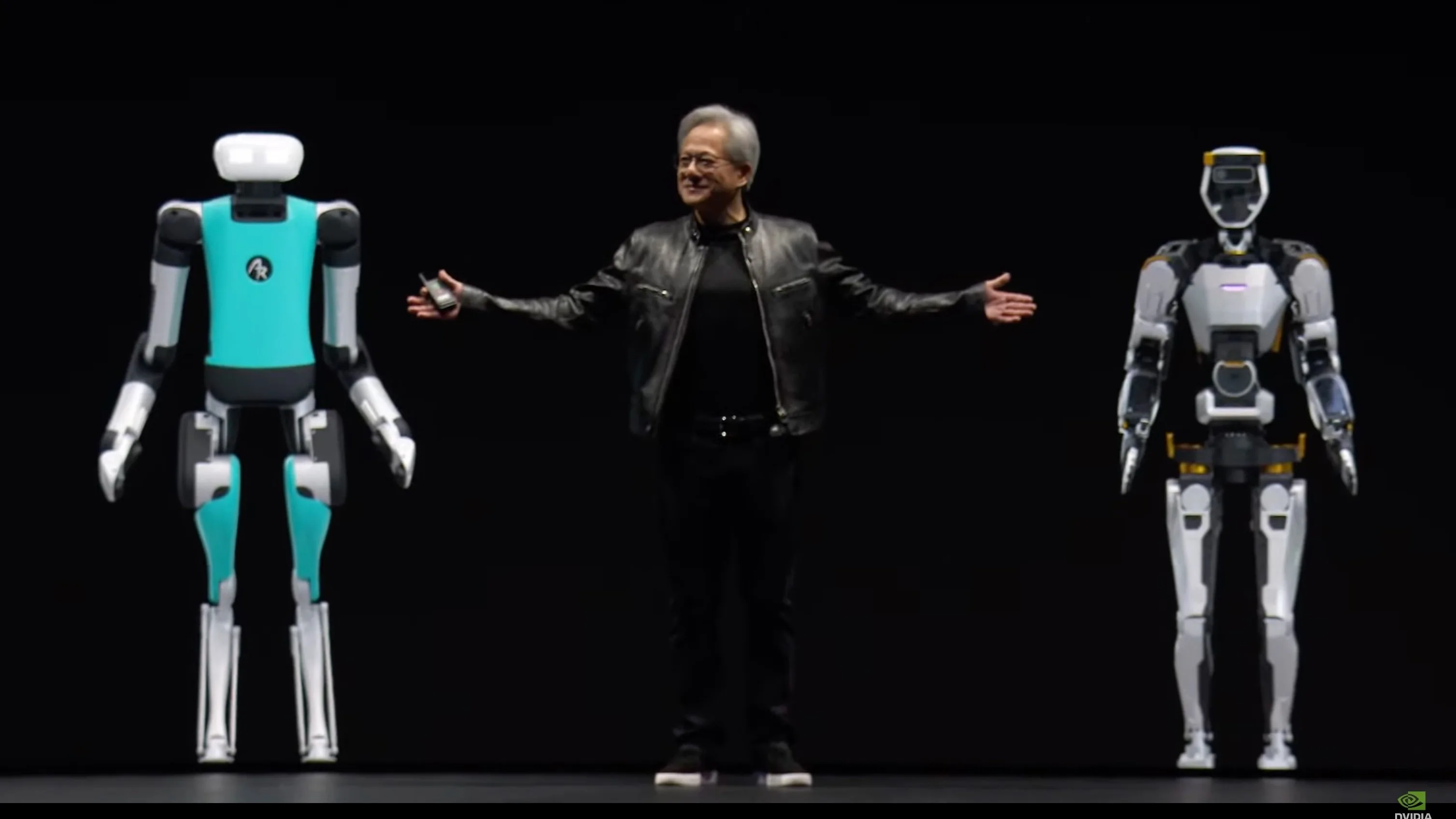AI News
Silicon
271
Image Credit: Silicon
Pentagon Awards AI Contracts To OpenAI, Google, Anthropic, xAI
- The US Department of Defence awarded contracts of up to $200 million to OpenAI, Google, Anthropic, and xAI to advance AI technology for national security.
- The contracts aim to develop workflows involving semi-autonomous AI bots to tackle national security challenges.
- The Pentagon is focused on adopting AI to support warfighters and maintain strategic advantage over adversaries, according to DoD chief digital and AI officer Doug Matty.
- US government agencies are increasingly utilizing AI tools, with xAI launching Grok for Government to provide AI models for federal, state, local, and national security customers.
Read Full Article
14 Likes
TechDigest
138

Image Credit: TechDigest
Nvidia to resume AI chip sales to China after US green light
- Nvidia is set to resume sales of its high-end AI chips to China after the US government granted necessary export licenses.
- The move reverses a ban imposed by the Trump administration in April, which prevented the sale of Nvidia's H20 chips to Beijing over national security concerns.
- The H20 chip, tailored for the Chinese market due to prior US export restrictions, faced blocked sales under Trump-era regulations.
- Trade tensions between the US and China appear to be easing, with recent agreements on tariffs and relaxations on rare earth exports and chip design software firms, driving Nvidia's decision to resume sales in China.
Read Full Article
8 Likes
Fourweekmba
269

Image Credit: Fourweekmba
YouTube Cracks Down on AI-Generated Content: Monetization Rules Go Live Today
- YouTube is implementing changes to its monetization policies targeting AI-generated content starting July 15, 2025.
- The new policy aims to curb monetization for channels relying heavily on automation, recycled clips, and repetitive videos lacking human creativity.
- YouTube acknowledges the update as minor, emphasizing the existing requirement for creators to add substantial value to content. It aims to combat 'inauthentic' content.
- Impacted channels include those with AI-generated videos, recycled clips, or reaction-based content that lack unique value. The enforcement details of the policy remain unclear.
Read Full Article
16 Likes
TechDigest
137

Image Credit: TechDigest
British AI firm aims to tackle ‘accent bias’ in synthetic voices
- Synthesia, a British AI firm, has developed a voice-cloning tool called Express-Voice to address accent bias in AI-generated speech dominated by North American or Southern English sounds.
- Synthesia's Express-Voice can clone a person's voice to preserve their unique accent or generate synthetic voices with specific local characteristics, aiming to offer genuinely localized content in various applications.
- While Synthesia focuses on accent preservation, companies like Sanas are working on tools to 'neutralize' accents, particularly for call center staff to reduce perceived 'accent discrimination.'
- As AI voice technology advances, concerns are raised about the misuse of voice-cloning tools for impersonation purposes, highlighting the need for ethical guidelines and security measures in this evolving landscape.
Read Full Article
8 Likes
Insider
186

Image Credit: Insider
I work in HR and am a fan of AI. After interviewing with an AI bot, I think it should stay out of job interviews.
- Emily Fenech, who works in HR and advocates AI automation, had a negative experience with a mock AI interview.
- The AI interview tool was criticized for being robotic, lacking emotional intelligence, and responding inappropriately to sarcasm.
- Fenech cautioned against using AI in emotionally nuanced tasks, like recruitment interviews, due to its limitations in understanding human cues and sarcasm.
- While AI is useful for structured data tasks, Fenech believes it should not be involved in interview processes that require emotional intelligence.
Read Full Article
11 Likes
Geeky-Gadgets
230

Image Credit: Geeky-Gadgets
Best AI Coding Tools of 2025 : Say Goodbye to Coding Frustrations
- AI-powered coding tools are revolutionizing software development by automating tasks and providing intelligent assistance, improving productivity and code quality.
- Large language models (LLMs) are key components of AI coding tools, enabling advanced functionalities like code generation, optimization, and debugging.
- Choosing the right AI coding tool depends on factors such as skill level, project requirements, and budget, with various recommendations available to assist in decision-making.
- Adopting strategies to maximize the benefits of AI coding tools can further enhance productivity and creativity in software development workflows.
Read Full Article
13 Likes
Insider
15

Image Credit: Insider
Microsoft salaries revealed: How much the tech giant pays software engineers, product managers, and more
- Microsoft's federal filings have revealed the salaries of employees, with software engineers able to make up to $284,000 in base pay.
- The tech giant has invested significantly in AI talent, offering big paydays to employees focused on AI initiatives.
- Despite layoffs of thousands of employees, Microsoft is still hiring and retains and rewards staff working on AI projects.
- The company's subsidiary, LinkedIn, is also hiring foreign workers, with senior software engineers in machine learning potentially earning up to $336,000.
Read Full Article
Like
TechnologyReview
210

Image Credit: TechnologyReview
AI’s giants want to take over the classroom
- Teachers are planning to integrate AI in K–12 classrooms next school year.
- Companies like OpenAI and Microsoft aim to train teachers for AI use.
- Despite potential benefits, concerns exist about AI's impact on students and education.
- Debate continues on the effectiveness and ethical use of AI tools in education.
Read Full Article
11 Likes
TechCrunch
138

Image Credit: TechCrunch
Nextdoor redesigns app with AI recommendations, local news, and real-time emergency alerts
- Nextdoor launches 'new Nextdoor' with local news, real-time alerts, and AI 'Faves.'
- Partners with 3,500 local publications; aims to improve platform engagement with redesign.
- Introduces hyper-localized real-time alerts and AI-powered feature 'Faves' for recommendations.
- Redesign focuses on quality local information, with plans for more content types.
Read Full Article
7 Likes
Dev
164

Image Credit: Dev
How Do Self-Driving Cars See the Road? A Look at the Amazing Tech Involved
- Self-driving cars utilize cameras, radar, and LiDAR for a 360-degree view.
- Cameras detect colors, read signs, and recognize objects, while radar gauges speed.
- LiDAR creates a detailed 3D map, aiding in precise depth perception.
- AI integrates data from all sensors to make split-second decisions accurately.
- Engineers are overcoming challenges to make self-driving cars safer and more efficient.
Read Full Article
9 Likes
Medium
23

Image Credit: Medium
AAEON’s NanoCOM-MTU Hosts 28W Intel Core Ultra CPUs on the COM Express Type 10 Form Factor
- AAEON has announced the NanoCOM-MTU, a COM Express Type 10 CPU Module powered by Intel® Core™ Ultra processors.
- The NanoCOM-MTU is designed for customers requiring high CPU performance and low power consumption, offering up to 16 cores and 22 threads on a small form factor.
- Key features include memory and storage options up to 32GB of LPDDR5(X) and 256GB of NVMe, Intel® Arc™ graphics supporting dual display outputs, and robust I/O with LAN port, USB ports, and serial communication interfaces.
- The module supports multiple operating systems, operates in a wide temperature range, and is suitable for applications such as smart healthcare imaging, AI-assisted industrial inspection, and robotics.
Read Full Article
1 Like
Medium
424

Image Credit: Medium
Deal or No Deal: How 72 Hours Reshaped the AI Landscape
- Windsurf, a player in AI developer tooling, went through a series of transitions, including a failed acquisition, a reverse acqui-hire, and a strategic asset transfer within 72 hours.
- OpenAI's $3 billion acquisition bid for Windsurf failed due to IP entanglements, leading to Google securing Windsurf's core team and Cognition AI acquiring its product and remaining team.
- The restructuring of Windsurf highlights the evolving nature of the AI market, where tooling risk stems from success being revalued upstream, not from product failure.
- The article advises enterprise buyers to consider evolving product strategies and the potential disconnect between vendor roadmap and their own priorities in the rapidly changing AI landscape.
Read Full Article
23 Likes
Medium
97

Image Credit: Medium
Reimagining Financial Modeling in Investment Banking with Generative AI
- Financial modeling in investment banking is being reimagined with the help of Generative AI, moving away from traditional Excel-based models towards intelligent, adaptive systems such as LLMs and platforms like LangChain and LangGraph.
- Generative AI is enhancing financial modeling by providing augmentation and aiding human judgment rather than replacing it, with innovations like RAG Pipelines making models more contextually aware.
- Key areas where AI is transforming financial modeling include scenario analysis, natural language to code/model transformation, accelerated due diligence, continuous model updating, custom report generation, and enhanced decision-making.
- While generative AI brings significant benefits to financial workflows, collaboration with human experts remains crucial, requiring a blend of innovation, transparency, governance, and ethical oversight to harness its full potential in investment banking.
Read Full Article
5 Likes
Silicon
54
Image Credit: Silicon
HSBC Sees $40bn Driverless Taxi Market In China
- HSBC analysts predict that the driverless taxi market in China could reach $40 billion annually, driven by advanced digital infrastructure and consumer interest in new technologies.
- Chinese firms are leading the global autonomous driving industry with robotaxis becoming more common, but specific timelines were not provided for market development.
- In addition to passenger services, autonomous vehicles could also tap into a $30 billion market for logistics and delivery, although initial costs may impact profitability for several years, according to HSBC.
- Chinese autonomous vehicles mainly operate at Level 4 autonomy, requiring partial human oversight, with companies like Baidu's Apollo leading the way in driverless technology deployment in cities like Wuhan.
Read Full Article
3 Likes
Silicon
237
Image Credit: Silicon
Silicon AI for Your Business Podcast: AI and the Democratisation of Design
- The Silicon AI for Your Business Podcast explores the impact of artificial intelligence on businesses' operations and competitiveness.
- In a recent episode, the podcast discusses AI and the Democratisation of Design, focusing on how AI-powered design assistants are changing the creative landscape.
- Hardy Sidhu, CEO of Format-3, joins the podcast to discuss whether AI is leveling the playing field for small businesses and solo creators in design or deepening the creative divide.
- The conversation delves into AI's role as an equalizer in design, its effects on human designers, and implications for industries like 3D design and manufacturing.
Read Full Article
9 Likes
For uninterrupted reading, download the app